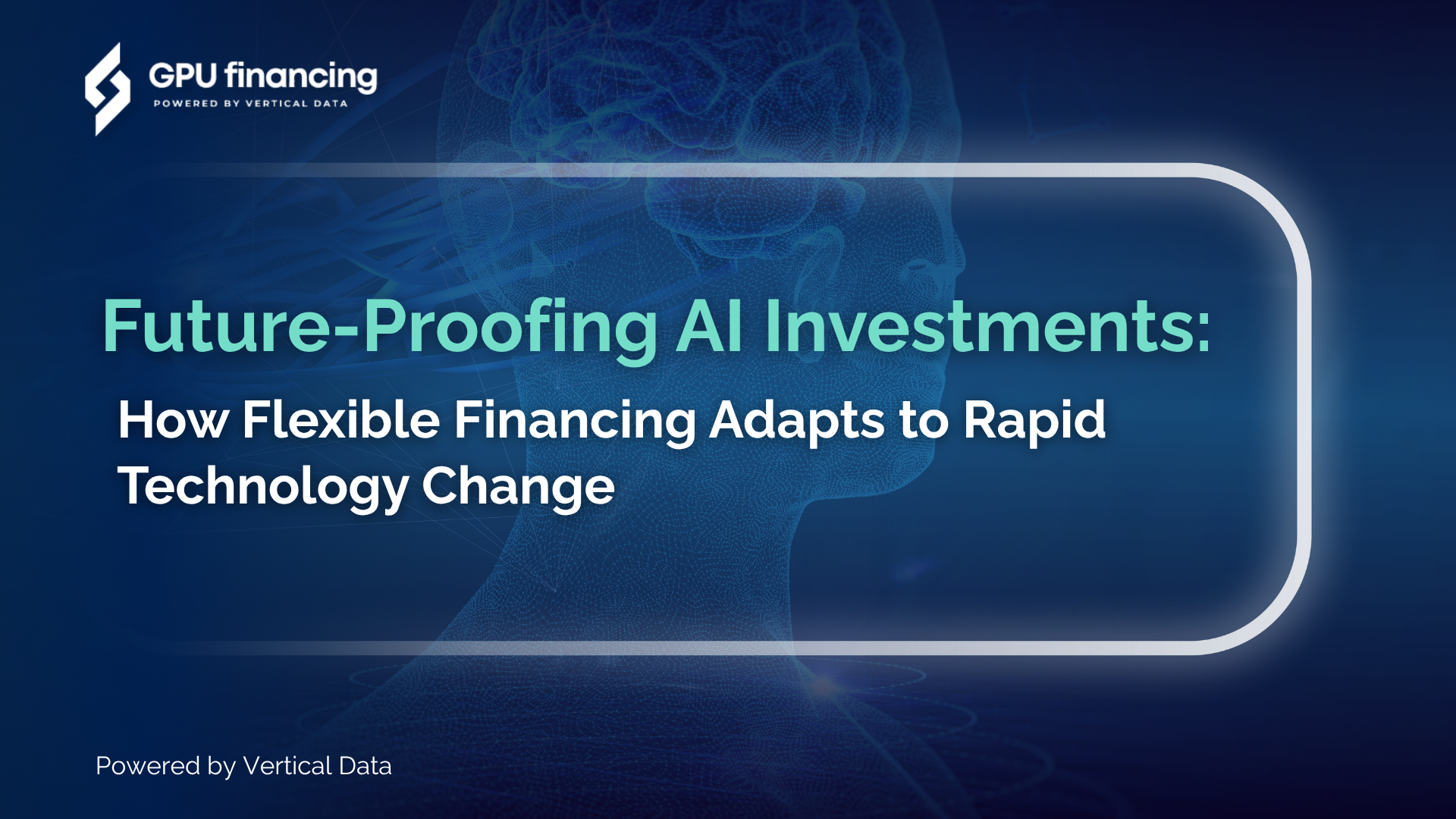The artificial intelligence hardware landscape evolves at an extraordinary pace. Each year, new GPU architectures enter the market, offering significant performance gains that often render previous generations obsolete within just two to three years. This rapid evolution presents a critical challenge for enterprises: how to sustain competitive AI capabilities without constantly reinvesting in costly hardware.
Traditional capital expenditure models, designed for assets with lifespans of five to seven years, are no longer suitable for AI infrastructure. These models cannot keep up with the short refresh cycles required to stay competitive. In contrast, flexible financing transforms the burden of capital investment into a manageable and strategic process that supports continuous technological advancement.
The Acceleration of Technology Cycles
Companies such as NVIDIA now operate on an annual refresh cycle, with each generation offering substantial improvements in performance and efficiency. Hardware that is considered state-of-the-art today may lose its competitive edge within a single fiscal year, not only in performance but also in its ability to support new AI models and applications.
Moreover, the architecture of newer GPUs often enables capabilities that were not possible with older hardware. Enterprises that commit to large upfront purchases may find themselves unable to support the next wave of AI innovation. Research shows that across the technology sector, hardware refresh cycles have shortened dramatically. Experts now recommend updating systems every two to four years, or even sooner in AI environments, to ensure both performance and compatibility with evolving use cases.
The Risk of Obsolescence
Depreciation of AI hardware does not follow the gradual curve seen with traditional IT equipment. Instead, its value can drop sharply when new models are released. This creates financial and operational risk for organizations that own rather than lease their infrastructure. While refresh cycles for general IT equipment have lengthened due to economic pressure, AI-specific systems follow a different trajectory. These systems demand frequent updates to keep pace with industry needs.
Organizations that delay refreshes to optimize depreciation may suffer from competitive lag. Meanwhile, those that pursue early refreshes face recurring capital demands that strain financial planning. Neither approach delivers an optimal balance of performance and cost efficiency.
Flexible Financing as a Strategic Enabler
Flexible financing helps enterprises mitigate these risks by shifting much of the technology and depreciation burden to the financing provider. Instead of absorbing the full cost of hardware that may rapidly lose value, enterprises can use structured financing options that include upgrade rights and refresh clauses.
Fair market value leases allow companies to return, upgrade, or purchase hardware at its current value at the end of the lease term. This flexibility helps avoid being locked into outdated technology and provides a clear path to upgrade without major disruption.
Some arrangements also support partial upgrades. Enterprises can improve specific components such as memory, storage, or accelerators without replacing entire systems. This modular refresh approach maximizes return on investment while preserving system continuity.
Aligning Cost with Value
Financing can also be structured to align payment schedules with the hardware’s useful life. For example, step-down payment models reduce monthly costs over time, recognizing that a GPU’s competitive value diminishes as newer models become available. This structure helps enterprises match their expenses to the value delivered by the equipment.
Some agreements even tie payments to performance metrics or business outcomes. When systems are running at peak capability, companies pay a higher rate. As the hardware becomes less competitive, payments decrease. This creates better financial alignment and prevents overpayment for aging infrastructure.
Building Long-Term Upgrade Paths
Future-proofing is not just about refreshing systems every few years. It also requires scalable upgrade plans that ensure continuity without downtime or cost spikes. With financing, enterprises can pre-negotiate upgrade terms and gain clarity on future equipment costs and delivery timelines.
Rolling refresh programs support continuous improvement without major disruptions. Instead of buying hardware in large, expensive waves, organizations can gradually upgrade different parts of their infrastructure over time, smoothing budget requirements and reducing operational risk.
Partnering with Strategic Vendors
The success of future-proofing efforts also depends on choosing financing partners with deep industry knowledge. Vendors who specialize in AI infrastructure can offer more than capital. They provide strategic guidance, early access to new technologies, and assistance in structuring upgrade paths.
Vendor programs may include priority support, exclusive product previews, and more personalized terms. These advantages are crucial for enterprises that rely on cutting-edge performance to remain competitive.
Long-term relationships with financing providers make it easier to plan future upgrades. With proper coordination, organizations can develop multi-year roadmaps that align technology adoption with business goals and financial cycles.
Managing Risk While Supporting Innovation
Flexible financing provides both risk mitigation and financial predictability. Technology insurance clauses can protect against sudden obsolescence by offering early upgrades or cost adjustments. This is especially important in AI, where breakthroughs can rapidly change the value of existing infrastructure.
By converting unpredictable capital needs into manageable operational expenses, organizations gain financial stability while retaining the agility needed to adopt emerging technologies. Budgeting becomes more accurate, and strategic planning shifts from reactive to proactive.
The Competitive Edge of Adaptability
In rapidly evolving industries, adaptability often creates more value than cost control. Enterprises that can adopt new tools quickly will lead the next wave of innovation. Flexible financing enables this agility by reducing financial barriers to technology adoption and offering structured ways to upgrade.
Those who view financing not only as a financial tool but also as a strategic enabler will be better positioned to compete. They will have access to the latest innovations without compromising financial discipline. Ultimately, flexible financing transforms technology refresh from a challenge into a capability that drives long-term competitive advantage.


